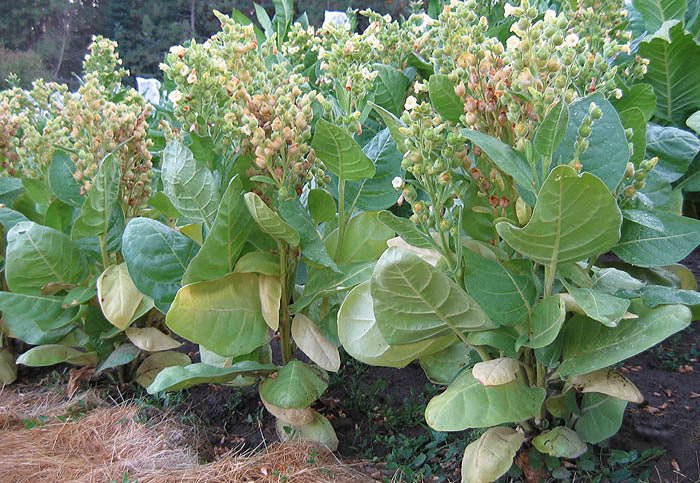Tobacco Rustica (Nicotiana rustica) is a lesser-known cousin of the more widely cultivated Nicotiana tabacum. Known for its potent aroma and high nicotine content, it has been used for centuries for its medicinal, ritualistic, and recreational purposes. Cultivating and curing this tobacco variety is a delicate process that requires the right techniques to preserve its distinct characteristics. In this comprehensive guide, we’ll explain how to cure tobacco rustica, focusing on various methods, common challenges, and the science behind curing. Whether you’re an experienced tobacco grower or a beginner looking to explore Rustica, this article will provide everything you need to know.
What is Tobacco Rustica?
Before diving into the curing process, it’s essential to understand what Tobacco Rustica is and why it differs from the more familiar tobacco species, Nicotiana tabacum.
Tobacco Rustica, also called Aztec or Indian tobacco, is a variety of wild tobacco with a significantly higher nicotine content than typical commercial varieties. This makes it a potent strain for both recreational and medicinal purposes. Although it is less commonly grown compared to Nicotiana tabacum, it has been gaining popularity among home growers and hobbyists due to its unique qualities.
Tobacco Rustica is a hardy plant that thrives in a variety of climates but requires careful handling when it comes to curing. The proper curing process helps reduce the harshness of the smoke and makes the tobacco more palatable.
The Importance of Curing Tobacco Rustica
Curing tobacco is a critical step in the cultivation process. Freshly harvested tobacco leaves are green, moist, and pungent. Curing helps to transform these raw leaves into a flavorful product that is easier to handle, store, and use. Specifically, curing:
- Reduces harshness: Raw Rustica tobacco is extremely potent, and curing helps mellow its intensity.
- Enhances flavor: Proper curing brings out the best flavors, from sweet to spicy and earthy notes.
- Improves storability: Cured tobacco can be stored for longer periods without deteriorating.
The process also helps reduce moisture content and prevents mold growth, which can otherwise spoil the leaves.
Methods of Curing Tobacco Rustica
There are several methods to cure Tobacco Rustica, each affecting the final product in different ways. The most common techniques are air curing, sun curing, fire curing, and flue curing.
Air Curing
Air curing is the simplest and most traditional method, especially suitable for outdoor environments with dry conditions. This method works well for Tobacco Rustica because it allows for slow, natural drying without intense heat that might alter the plant’s natural flavors.
Steps for air curing:
- Harvest the leaves: Once the leaves reach their full size and begin to turn yellow, they are ready for harvest. Be sure to harvest them early in the morning when they are free from dew.
- Hang the leaves: Gently hang the leaves on a drying rack or in a shaded area, ensuring they don’t overlap. This allows the air to circulate around the leaves.
- Monitor drying conditions: Keep the environment well-ventilated, dry, and away from direct sunlight. Ideal temperatures should range from 60°F to 70°F (15°C to 21°C).
- Drying time: It typically takes several weeks (3-4 weeks) for the leaves to cure fully. The leaves should be dry to the touch and brittle.
Advantages:
- Simple and inexpensive.
- Retains natural tobacco flavors.
- Suitable for home growers with limited equipment.
Disadvantages:
- Takes longer to cure compared to other methods.
- Less consistent results, depending on environmental conditions.
- Sun Curing
Sun curing is another traditional method that uses the power of the sun to dry the tobacco leaves. This method works best in regions with hot, dry climates where the sun provides consistent heat.
Steps for sun curing:
- Prepare the leaves: Similar to air curing, harvest the tobacco leaves when they are mature and yellowish.
- Lay out the leaves: Spread the leaves out on a flat surface or hang them in direct sunlight. Make sure they are spaced out to allow for even drying.
- Turn the leaves: To prevent mold growth, turn the leaves regularly to ensure even exposure to the sun.
- Monitor the drying process: The drying time for sun curing usually takes 1-2 weeks, depending on the weather conditions.
Advantages:
- Faster than air curing.
- Utilizes natural sunlight, which can enhance the tobacco’s natural aroma.
Disadvantages:
- Vulnerable to sudden weather changes like rain or excessive humidity.
- Requires a sunny, dry climate.
- Fire Curing
Fire curing involves using smoke to dry the leaves. This method is more intensive and requires a smoker or kiln. Fire curing imparts a smoky flavor to the tobacco, which is characteristic of many traditional cigars and specialty tobaccos.
Steps for fire curing:
- Harvest the leaves: As with other methods, the leaves should be harvested when mature.
- Prepare the fire curing setup: Set up a smoker or kiln that can maintain a low, consistent heat. You will need a small fire to produce smoke rather than intense flames.
- Hang the leaves: Hang the leaves inside the smoker, making sure they are exposed to the smoke.
- Maintain proper temperature: The leaves should be exposed to low temperatures (around 100°F to 120°F or 38°C to 49°C) for an extended period (1-2 weeks).
- Monitor regularly: Keep an eye on the smoke levels to ensure the tobacco is not exposed to too much heat.
Advantages:
- Adds a unique smoky flavor to the tobacco.
- Helps preserve the leaves for long-term storage.
Disadvantages:
- Requires special equipment like a smoker or kiln.
- Longer curing time and more intensive labor.
- Flue Curing
Flue curing is a more modern method often used for Nicotiana tabacum, but it can also be applied to Tobacco Rustica. This method involves using heated air, rather than direct flames or smoke, to cure the tobacco. It allows for more control over the curing process and can be done in a controlled environment.
Steps for flue curing:
- Prepare the curing barn: Set up a flue-curing barn with a heating system that circulates hot air around the tobacco.
- Hang the tobacco: Hang the leaves in the barn, ensuring that they are evenly spaced for optimal air circulation.
- Adjust the temperature: The temperature inside the curing barn should range from 120°F to 135°F (49°C to 57°C). Gradually increase the temperature as the curing progresses.
- Monitor humidity: Flue curing also requires controlling the humidity to avoid mold or over-drying.
- Curing time: This method usually takes about 4-7 days, depending on the desired result.
Advantages:
- Faster than air or sun curing.
- Greater control over temperature and humidity.
Disadvantages:
- Requires specialized equipment and energy resources.
- Can alter the natural flavor profile more than air or sun curing.
Comparison of Curing Methods
| Method | Time Required | Flavor Profile | Complexity | Best For |
| Air Curing | 3-4 weeks | Natural, mild | Low | Hobbyists, small-scale growers |
| Sun Curing | 1-2 weeks | Sweet, earthy | Medium | Sunny climates, fast curing |
| Fire Curing | 1-2 weeks | Smoky, rich | High | Smoky flavor enthusiasts |
| Flue Curing | 4-7 days | Mild, sweet | High | Commercial growers |
Troubleshooting Common Curing Problems
While curing Tobacco Rustica is a straightforward process, issues can sometimes arise. Here are some common challenges and how to address them:
- Mold growth: If your tobacco is exposed to too much humidity or moisture, mold may develop. To prevent this, ensure good ventilation and avoid curing in overly damp conditions.
- Over-drying: If tobacco becomes too dry, it can lose its flavor and become brittle. Monitor your curing process carefully and remove the leaves as soon as they reach the right texture.
- Uneven curing: If leaves are not spaced properly, they may dry unevenly. Be sure to give each leaf plenty of space to allow for even airflow.
Conclusion
Learning how to cure tobacco rustica is a rewarding and important skill for any tobacco grower. Whether you choose air curing, sun curing, fire curing, or flue curing, each method offers unique advantages that can affect the flavor and quality of your final product. By understanding these techniques and troubleshooting common issues, you can produce high-quality cured tobacco for personal use or even for sale.
Proper curing of Tobacco Rustica enhances its rich, potent flavor and ensures that it can be stored safely for long-term use. With this knowledge, you’re equipped to tackle the curing process with confidence. Happy growing and curing!

